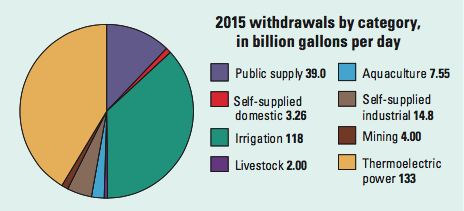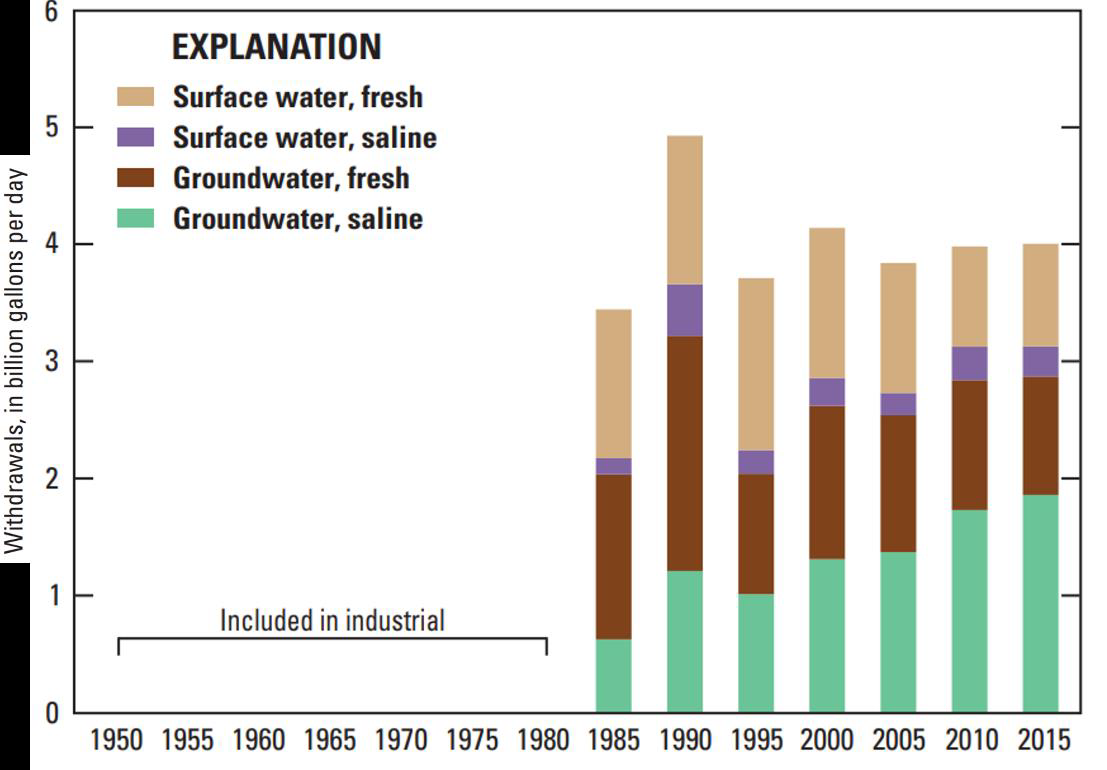Issue
Water is among the world’s most important natural resources. Demand for water is increasing due to growing energy, agricultural, public, and industrial demands, while water supply is subject to disruption due to climate change. Although mining represents a small fraction of the total world’s water demand, its impacts on local resources surrounding mine sites can be significant. Mining companies can use their management and financial resources to play a leading role in developing and applying sustainable water management practices.
As global population increases and economic development advances, balancing the population’s need for access to clean water with the increasing demand for water resources will become more difficult. Satisfying the demand for higher living standards and green energy is heavily dependent upon mineral products from expanded mining activities, meaning that mining companies need to effectively manage water to maintain their operations and the needs of surrounding communities.
Background
The major public concerns with mining and water supply include the potential local impacts due to water withdrawal from surface and ground water resources.
Use - In the U.S. during 2015, an estimated 4 billion gallons per day (Bgal/d) was withdrawn for mining purposes, as compared to 26.6 Bgal/day for domestic use (combined public- and self-supplied), 133 Bgal/day used for thermoelectric plants, and 118 Bgal/d consumed for irrigation (Figure 1). Mining withdrawals were about 1 percent of total withdrawals or 2 percent if thermoelectric power generation is excluded. The amount of water used by the mining industry has remained fairly steady over the past two decades (Figure 2).

Availability - The management of water during mining includes dewatering of the mine, the use of water in milling and processing operations, and the discharge of treated water to surface or ground water. Mines consume a small proportion of the water they use for their processes. The amount of water consumed in the operation versus that requiring discharge varies depending on the site-specific climatic conditions and the size and type of the mining operation.

Larger mining operations frequently have need for on-site water treatment for source water, water reuse, and discharge. Approximately three-quarters of the water consumed by the U.S. mining industry comes from groundwater (Figure 2). Around two-thirds of the groundwater used in U.S. mining is saline, containing concentrations of dissolved salts too high for it to be used as drinking water and sometimes requiring treatment prior to use in mining operations. In Chile, high demand for water in extremely arid mining regions has led to increasing use of seawater (Montes and Cantallopts, 2018). Mines maximize recycling water from tailings impoundments and wastewater collection ponds and also use the water that is removed from the mines themselves. If excess water remains after control and treatment, mining operations are able to return the water to a surface source or re-inject it into the ground, provided the water meets water quality standards.
Federal, state and local regulations govern mine waste and water management, as well as closure planning and post-closure mitigation and monitoring. Financial assurance requirements have also evolved to better accommodate the known costs of environmental cleanup and mine closure, including any post-closure water treatment requirements, which can be significant and long term.
Accounting for Climate Related Impacts - Mining is no stranger to harsh climates; much of the industry already operates in inhospitable conditions. But forecasts of hazards such as heavy precipitation, drought, and heat indicate these effects will get more frequent and intense, increasing the physical challenges to mining operations.1 According to some analyses, climate change is expected to cause more frequent droughts and floods, altering the supply of water to mining sites and potentially disrupting operations.
Thus, companies are committing to take measures to reduce potential disruptions while lowering the overall carbon footprint of their operations.2 Environmental and social governance policies are key to the accomplishment of climate objectives. As the National Mining Association (NMA) reports, the mining industry continues to proactively undertake efforts to protect the environment, including measuring and reducing its carbon footprint through continual investment in and implementation of technology solutions, energy conservation and efficiency programs.3
SME Statement Of Technical Position
SME supports the goals to continually improve management of water at mines and minimize the effects of mining on water quantity:
- Maximizing water recycling and minimizing water consumption during operations, including in pre- and post-mining phases; and
- Integrating water conservation measures in mine planning, design and operation.
- Addressing the impacts of climate change and the transition to a green energy future.
These goals can be achieved by:
- Facilitating research, education and training in scientific approaches to minimizing water use at mining operations;
- Developing additional water re-use technologies for water encountered at mine sites;
- Developing mine dewatering approaches that minimize water extraction rates;
- Promoting cooperation among international stakeholders engaged in scientific or engineering work in the field of mine water problems and related sciences; and
- Promoting the exchange and publication of water-related scientific and engineering information.
- Adopting and successfully implementing ESG policies that will facilitate the transition to a clean energy future.
REFERENCES
Dieter, C.A., Maupin, M.A., Caldwell, R.R., Harris, M.A., Ivahnenko, T.I., Lovelace, J.K., Barber, N.L., and Linsey, K.S., 2018, Estimated use of water in the United States in 2015: U.S. Geological Survey Circular 1441, 65 p., https://doi.org/10.3133/cir1441.
Montes, C., and Cantallopts, J., 2018, Forecast for water consumption in the copper mining industry, 2018-2029, Comisión Chilena del Cobre, DEPP 21/2018, 40 p.
1 https://www.mckinsey.com/business-functions/sustainability/our-insights/climate-risk-and-decarbonization-what-every-mining-ceo-needs-to-know
2 https://www.newmont.com/blog-stories/blog-stories-details/2021/One-Year-of-Newmonts-Leading-Climate-Change-Commitments-and-the-Companys-Progress-Toward-Net-Zero/default.aspx#:~:text=Sustainable%20Finance-,One%20Year%20of%20Newmont's%20Leading%20Climate%20Change%20Commitments,Company's%20Progress%20Toward%20Net%20Zero&text=The%20goals%20are%20to%20reduce,net%20zero%20carbon%20by%202050.
3 https://nma.org/esg/nma-climate-change-position/
Download PDF